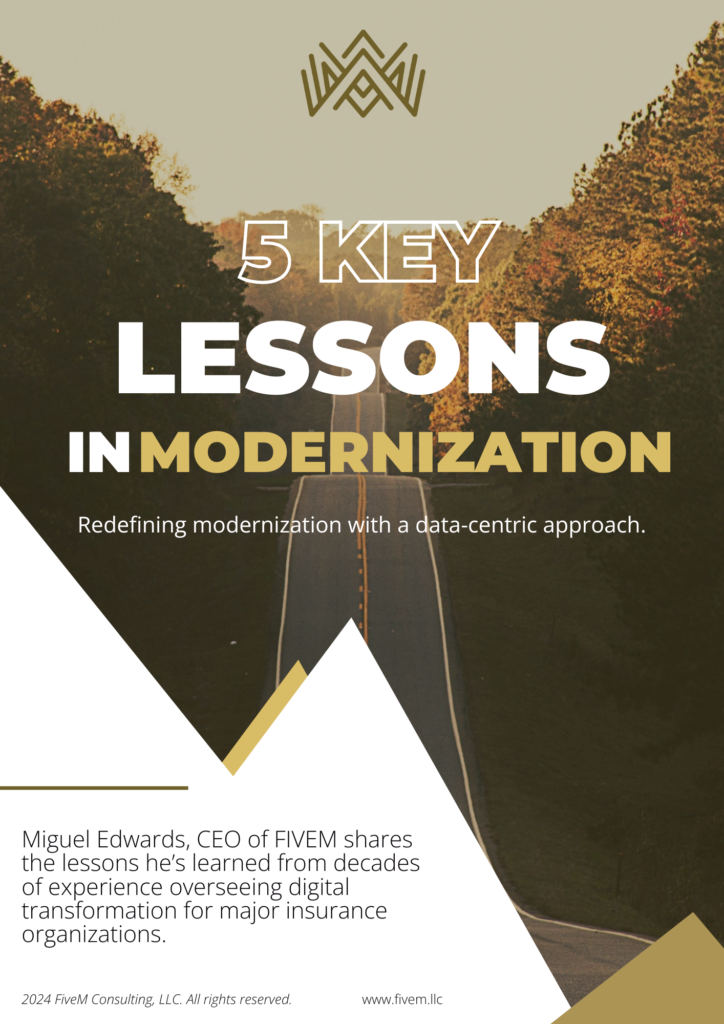As the pace of business transformation continues to accelerate in 2025, operational excellence has become more than a competitive advantage, it’s an absolute necessity. With innovation reshaping industries and raising consumer expectations, organizations need precision-driven strategies to remain agile and efficient.
For small to medium-sized insurance organizations, achieving operational agility without overwhelming limited resources is a balancing act. But here’s the good news: By adopting specific, modernized strategies, you can unlock measurable outcomes while staying focused on your core mission. Let’s dive into five key strategies to help you achieve faster, smarter results.
1. Process Optimization: A Foundation for Speed
Operational bottlenecks can slow progress and frustrate employees, leading to missed opportunities. Start by identifying inefficient, manual, or redundant processes. By streamlining these, you’ll free up resources for higher-value work and improve your overall speed of execution.
How to Get Started:
- Conduct a “stop-start-continue” analysis with your team. Evaluate processes to determine which should be stopped, optimized, or continued as-is.
- Leverage technologies like Robotic Process Automation (RPA) and intelligent workflows to automate repetitive tasks, such as claims processing or administrative approvals.
Pro Tip: Digitizing low-value, high-volume tasks not only saves time but also reduces errors, improving service delivery and team morale.
2. Real-Time Decision-Making Through Data Integration
In today’s fast-paced environment, data is the currency of better decision-making. Siloed systems, however, can block visibility and slow down critical actions. By adopting a centralized data platform, your organization can transform fragmented information into actionable insights available in real time.
Action Plan for 2025:
- Implement a data governance framework to ensure your data is clean, accurate, and accessible.
- Invest in predictive analytics to anticipate risks, opportunities, and trends, allowing you to stay ahead of the curve.
- Enable cross-departmental data sharing so decision-makers can align faster and more effectively.
Example: By integrating policyholder data, claims history, and external risk metrics, an insurance organization can offer personalized coverage options and spot fraud before it becomes an issue.
3. Strategies Alignment Between IT and Business
IT departments often face shifting priorities, but aligning IT initiatives with business goals can eliminate inefficiencies and ensure resources are spent on what truly matters. When IT is seen as a strategic partner, your organization gains a more seamless and focused approach to transformation.
Key Steps to Foster Alignment:
- Use a value-versus-effort framework to evaluate IT requests. This ensures resources are allocated to high-impact projects.
- Prioritize projects based on ROI, feasibility, and alignment with organizational goals.
- Conduct regular collaboration meetings between business leaders and IT to keep everyone on the same page.
Case Study: A medium-sized insurance company recently implemented an automated claims portal, prioritizing this initiative because of its clear benefits for customer satisfaction and operational cost savings. This kind of alignment can make all the difference.
4. Employee-Centric Change Management
Here’s the reality: Even the most well-designed operational strategies will fail without buy-in from your employees. That’s why engaging your team, addressing concerns, and offering clear communication throughout the transformation process is essential.
Best Practices for Change Management:
- Develop a roadmap for change that includes clear objectives, timelines, and milestones.
- Provide employees with micro-learning modules and workshops that outline how new processes or technologies will benefit them.
- Establish regular feedback loops to address concerns and fine-tune your implementation plan as needed.
Quick Win: Celebrate small victories with your team, such as the successful adoption of a new tool or process. Positive reinforcement encourages continued buy-in and builds momentum.
5. Embrace Incremental Modernization
“Big-bang” transformations sound exciting, but they often lead to delays, burnout, and missed opportunities. Instead, embrace incremental modernization by breaking down large goals into manageable phases. Deliver value at each stage while maintaining flexibility to adjust along the way.
How to Modernize Gradually:
- Start with low-hanging fruit like automating repetitive back-office tasks or digitizing customer communications.
- Use each phase of transformation as a learning opportunity to refine your next steps.
- Regularly showcase measurable outcomes to gain stakeholder confidence and build internal support.
Example: By digitizing policy documentation as a first step, you’ll streamline compliance processes and enhance the customer experience—all while gaining valuable insights to guide future initiatives.
Is Your Strategy Ready for 2025?
By adopting precision-driven operational strategies, your organization can achieve measurable results and stay ahead in a rapidly evolving market. The key is to focus on actionable steps—process optimization, real-time data integration, IT-business alignment, employee engagement, and incremental modernization.
Modernization is no longer optional. With the right strategies, you can achieve operational excellence while staying true to your mission.
Take Action: Ready to assess your operational strategy for 2025? Look at your current processes, identify inefficiencies, and prioritize areas for improvement. If you need expert guidance, consider reaching out to FiveM Consulting for tailored solutions that drive measurable outcomes.





